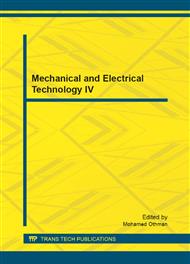p.2638
p.2643
p.2648
p.2653
p.2658
p.2663
p.2667
p.2671
p.2680
Solar Straight Thermal Circumfluence Closed-End Seawater Desalination System Analysis
Abstract:
This paper studies a small prototype of solar desalination device, using the method of directly heating sea water and a double negative pressure evaporation room in the desalination operation. The system uses common sea water, it is cost-effective and can make full use of low-grade solar energy. More over, and the wind power can provide energy for the whole electrical control system, realizing the full closed automation. Through testing and analyzing, the relationship between the main parameters of the system is confirmed; this lays the theoretical foundation for matching each parameter of the whole system, and helps to determine the optimal desalination method.
Info:
Periodical:
Pages:
2658-2662
Citation:
Online since:
November 2012
Authors:
Keywords:
Price:
Сopyright:
© 2012 Trans Tech Publications Ltd. All Rights Reserved
Share:
Citation:



